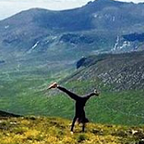Ratatouille: A Ratrospective
For centuries, rats have been unceremoniously thrust to the margins of cinematic history. Cast aside, ignored, denigrated, they’ve been forced to watch a parade of celebrity mice take the silver screen again and again.
These rodent icons have since become household names: Mickey & Minnie Mouse, Mighty Mouse, Stuart Little. Some of these characters, like Fievel, were clear Oscar-bait from the moment a script was incubated. An immigrant mouse with a melodious voice and a Soviet-hipster lewk? Come on! The Academy voters were putty in his tiny paw-claw-hands.
Others unlocked niche genres in career-defining roles, like what The Great Mouse Detective did for film noir or Pinky & The Brain did for acerbic ensemble comedy. In his dashing getup, mouse icon Speedy Gonzalez bridged a significant (and arguably problematic) cultural gap between Americas North & South. Angelina Ballerina was a disastrous — if well-intended — attempt at female rodent visibility, but one that has left feminist mice groaning ever since.
But where (one might ask) were the rats?
The answer to that question is a long and tragic one, as rats attempted to improve their image in the public eye. As early as the Middle Ages, rats were assigned blame for the bubonic plague — a dastardly and frankly racist assumption that has tarnished their reputation ever since. It is an old, familiar story: the propaganda machine turns on our rodent friends and publicly defiles them, in a mud-slinging media war that many historians have since connected to the subsequent use of rats in scientific experiments. Some of our greatest scientific discoveries have been achieved off the backs of long-suffering, oppressed rats.
It is true that some rats attempt to fight against The Man, to turn the tide of anti-rat public sentiment. We experienced a brief reprieve with Pizza Rat, yet Peter Pettigrew did everlasting damage as a shape-shifting-rat-villain in the Harry Potter franchise. Prospects were grim, and hope was all but lost.
Then, in 2007, everything changed. A tiny rat with a big dream exploded across cinemas globally, reminding the world that rats are capable of anything. This was an essential turning point in the Pro-Rat movement, for Ratatouille gave audiences a rat at the pinnacle of High Culture: immersed in the culinary arts, accompanied by smooth jazz, and depicted sporting high-fashion chef hats of varying heights. One cannot stress enough how monumental this film was in rodent history.
Therefore, it is our privilege — nay, our duty! — to watch this landmark film. We do it to show ourselves, and our pets, and any subway rats out there wishing on a falling star, that dreams are possible with a sprinkle of hope and a dash of faith.
(And salt. Don’t forget the salt, otherwise it’ll just taste gross.)
